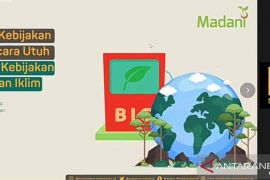"Security officers should not only seize illegal timbers, but also arrest the perpetrators of illegal logging activities," Director Executive of Walhi branch of North Sumatra, Dana Tarigan, said.Medan, N Sumatra (ANTARA News) - Indonesian Environmental Forum (Walhi) has urged legal enforcers to take firm action against illegal logging activities in Mount Leuser National Park, Langkat District, North Sumatra Province.
"Security officers should not only seize illegal timbers, but also arrest the perpetrators of illegal logging activities," Director Executive of Walhi branch of North Sumatra Dana Tarigan, said here, Sunday.
The authorities must take stern action against illegal logging activities, the NGO activist said.
The perpetrators must be punished heavily to give them and others a deterrent effect, according to Tarigan.
A joint team comprising among others personnel from the environmental affairs and forestry ministry and police officers, recently seized tens of cubic meters of timbers in Telagah village, Sei Bingei sub-district, Langkat District.
The Leuser ecosystem located in North Sumatra and Aceh Provinces, is among the most biodiverse and ancient ecosystems to be ever documented by science and the last habitat of Sumatran orangutans, elephants, tigers, rhinos, and sun bears.
The ecosystem is part of the 2.5 million-hectare Tropical Rainforest Heritage of Sumatra site that comprises three national parks: Gunung Leuser National Park, Kerinci Seblat National Park, and Bukit Barisan Selatan National Park.
The site holds the greatest potential for long-term conservation of the distinctive and diverse biota of Sumatra, including many endangered species.
The protected area is home to an estimated 10,000 plant species, including 17 endemic genera; more than 200 mammal species; and some 580 bird species of which 465 are resident and 21 are endemic. Of the mammal species, 22 are Asian, not found elsewhere in the archipelago and 15 are confined to the Indonesian region, including the endemic Sumatran orang-utan.
The World Heritage List of the United Nations Educational, Scientific, and Cultural Organization (UNESCO) has inscribed the site since 2004. The natural site has been inscribed on the List of World Heritage in Danger since 2011 until present. (*)
Editor: Heru Purwanto
Copyright © ANTARA 2017











